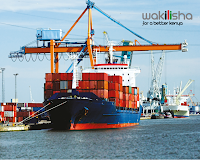Africa needs to invest $1.2trn to fast track infrastructure
 |
| Karuma Hydro Dam in Uganda: More energy generation needed |
Of this amount, the continent, through budgetary allocations and
donor support, can manage $65 billion a year, leaving a yawning gap of US$105
billion or a total of $735 billion over the seven-year period. The AEO breaks
down the sectoral needs as follows in order of priority: US$ 35-50 billion on
energy, $35-47 billion on transport, and $55-66 billion on water and sanitation.
Africa is under increased pressure to invest in infrastructure in order to remove the inefficiencies that could stall the recently launched continent-wide free trade area. AfCFTA billed the largest free trade area in the world holds the key to Africa’s economic independence and security.
However, the continent’s productive sectors are uncompetitive due to structural deficiencies, among which is small markets, and low capacity utilization due to infrastructure bottlenecks. For AfCFTA to succeed, experts say, the continent needs to invest in transport and energy infrastructure.
However, the continent’s productive sectors are uncompetitive due to structural deficiencies, among which is small markets, and low capacity utilization due to infrastructure bottlenecks. For AfCFTA to succeed, experts say, the continent needs to invest in transport and energy infrastructure.
 |
| Thika Highway in Kenya: More of these needed |
All these bottlenecks increase the cost of production leading to high consumer prices, low demand, and the proliferation of cheap imports. Industrialization cannot grow in such a business environment. Yet Africa must industrialize to create jobs and reduce the incidence of poverty.
Given that domestic sources cannot meet the continent’s
demand for infrastructure, external sources will be necessary. The continent
will need to raise at least US$0.8 trillion from external sources to build
infrastructure over the next seven years as a top priority.
 |
| Offloading at a Port: Lack of good overland Transport cause delays at Ports |
This is a huge amount for a continent whose GDP now stands
at US$2.5 trillion. Therefore innovation in funds mobilization is necessary.
Of course, the GDP will not remain static. In any case
Africa’s GDP growth is robust at around 4.0 percent, way above the growth in
other emerging economies. However, this growth cannot generate the funds needed
to build infrastructure hence the need to mobilize resources through all
mechanisms.
The AEO 2018 says that Institutional investors, Commercial
banks and Sovereign fund managers are sitting on US$ 100 trillion in savings.
This means that the funds needed to invest in Africa’s infrastructure is a drop
in the ocean. However to mobilize these resources, Africa needs to develop a
pipeline of bankable projects, says AfDB
www.afdb.org.
 |
| Kenya's SGR: More of these will ease landlocked countries develop |
The AFDB has set up the Africa50, www.Africa50.org, an investment
vehicle whose job is to help develop such a pipeline of bankable projects in
the continent. Africa50’s goal is to move the bulk of project development away
from the public to the private sector in order to fast track investment in
infrastructure. It, therefore, targets private sector-driven projects or those
designed on a PPP model in transport infrastructure, energy, and ICT. These
sectors, it is estimated, will consume 80 percent of the total investment in
infrastructure.
Africa50 capitalized at US$870 million, is
owned by 30 shareholders including 27 countries and three Central Banks.
Although a step in the right direction, it is doubtful that
Africa 50 can achieve the target infrastructure levels on its own in the
short-run. Some Borrowing by African states is therefore unavoidable. Even
then, the active participation of Africa50 could reduce the risk profile of
debts in Africa and reduce the cost of borrowing.



ReplyDeleteHey Guys!!!Am so happy I got mine from Mike Fisher. My blank ATM card can withdraw € 2,000 daily. I got it from Her last week and now I have €14,000 for free. The blank ATM withdraws money from any ATM machines and there is no name on it, it is not traceable and now i have money for business and enough money for me and my family to live on . I am really happy i met Mike Fisher because i met two people before her and they took my money not knowing that they were scams. But am happy now. Mike Fisher sent the card through DHL and i got it in two days. Get your own card from her now she is not like other scammer pretending to have the ATM card, She is giving it out for free to help people even if it is illegal but it helps a lot and no one ever gets caught. i'm grateful to Mike Fisher because she changed my story all of a sudden . The card works in all countries except, Mali and Nigeria. Mike Fisher email address is : blankatm156@gmail.com
"She is giving it out for free to help people even if it is illegal but it helps a lot and no one ever gets caught." So what is this? Sophisticated crime?
ReplyDelete